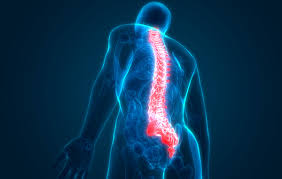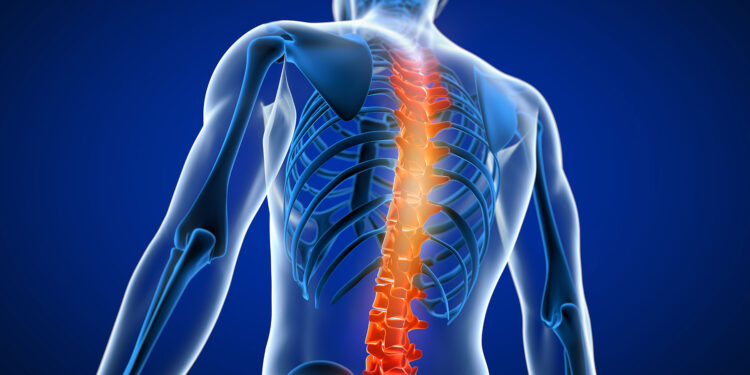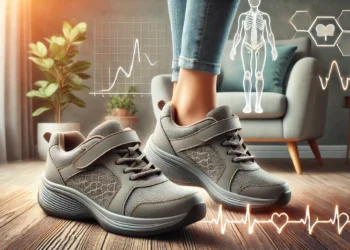The COVID-19 pandemic has affected millions of people worldwide, causing a wide range of symptoms beyond respiratory issues. One common but often overlooked symptom is back pain. Whether due to the virus itself, prolonged inactivity, or post-COVID complications, back pain can be a significant concern for many individuals.
Causes of Back Pain During COVID-19
Inflammatory Response
COVID-19 can trigger an inflammatory reaction in the body, leading to muscle and joint pain, including back pain. The immune response can cause widespread discomfort, and for some individuals, inflammation persists even after recovering from the virus.
Read Also: Back and Body Hurts: Causes, Relief Tips, and Prevention – Experiencing Back and Body Pain!
Prolonged Bed Rest
Many COVID-19 patients experience fatigue and prolonged bed rest, which can weaken muscles and contribute to back pain. Lack of movement leads to stiffness and loss of muscle strength, making it difficult to maintain proper posture and support the spine.
Work-from-Home Lifestyle
The shift to remote work has led many people to use makeshift home office setups, such as working from couches or beds. Poor posture, lack of ergonomic furniture, and long hours of sitting have significantly contributed to increased back pain during the pandemic.
Stress and Anxiety
Mental stress during the pandemic can lead to muscle tension, increasing discomfort in the back and shoulders. Chronic stress can cause the body to remain in a tense state, leading to muscle fatigue and worsening back pain over time.
Post-COVID Syndrome (Long COVID)
Some individuals experience lingering symptoms after recovering from COVID-19, including chronic back pain. Post-COVID syndrome can cause ongoing muscle weakness, inflammation, and general discomfort, making recovery more challenging.
Tips to Prevent and Manage COVID-Related Back Pain

Stay Active
Engage in gentle stretching and light exercises to prevent muscle stiffness. Yoga, Pilates, and daily walks can help keep your back healthy. Low-impact exercises, such as swimming and tai chi, can also improve flexibility and reduce discomfort.
Maintain Good Posture
If working from home, ensure your workstation is ergonomically designed. Use a supportive chair, keep your computer screen at eye level, and avoid slouching. Consider using a standing desk or taking frequent breaks to move and stretch.
Practice Stress Management
Incorporate relaxation techniques like deep breathing, meditation, or mindfulness to reduce tension-related back pain. Managing stress can also prevent the development of chronic muscle tightness, which often exacerbates back pain.
Improve Sleep Habits
A good mattress and proper sleeping posture can significantly reduce back pain. Avoid sleeping on your stomach and use pillows for support. A medium-firm mattress is often recommended for spinal alignment, and memory foam or orthopedic pillows can provide additional relief.
Stay Hydrated and Maintain a Healthy Diet
Dehydration can contribute to muscle cramps and stiffness. Drinking enough water and maintaining a balanced diet rich in anti-inflammatory foods, such as leafy greens, berries, and omega-3 fatty acids, can help reduce inflammation and promote muscle recovery.
Use Heat and Cold Therapy
Applying heat to sore muscles can increase blood flow and relax tight areas, while cold therapy can help reduce inflammation and numb acute pain. Alternating between heat and ice packs can be effective in managing back pain symptoms.
Seek Medical Attention if Needed
If back pain persists or worsens, consult a healthcare professional. Physical therapy, pain management techniques, or medication might be necessary. In some cases, persistent back pain may indicate an underlying condition that requires specialized treatment.
Additional Strategies for Managing COVID-Related Back Pain
Ergonomic Workstation Setup
Setting up a proper workspace with an ergonomic chair, adjustable desk, and lumbar support can prevent and alleviate back pain. Using a footrest and positioning your keyboard and monitor correctly can also enhance comfort and reduce strain.
Breathing Exercises for Pain Relief
Practicing controlled breathing techniques, such as diaphragmatic breathing and box breathing, can help reduce tension and promote relaxation, which may ease back pain symptoms caused by stress.
Importance of Regular Movement Breaks
Taking short movement breaks every 30-60 minutes can prevent stiffness and improve circulation. Simple activities like standing, stretching, or walking around your home can significantly benefit spinal health.
FAQs:
1 Can COVID-19 cause back pain?
Yes, COVID-19 can trigger inflammation and muscle pain, leading to back discomfort.
2 Why do people experience back pain after COVID-19?
Post-COVID syndrome (Long COVID), prolonged inactivity, and muscle weakness can contribute to persistent back pain.
3 How can I relieve back pain caused by working from home?
Maintain good posture, use an ergonomic chair, take regular breaks, and do stretching exercises.
4 What are the best exercises for COVID-related back pain?
Gentle stretching, yoga, Pilates, and walking can help reduce stiffness and improve flexibility.
5 When should I see a doctor for COVID-related back pain?
If back pain is severe, persistent, or affects daily activities, consult a healthcare professional for evaluation and treatment.
Conclusion:
Back pain related to COVID-19 is a common issue but can often be managed with simple lifestyle adjustments. By staying active, maintaining proper posture, and managing stress, you can minimize discomfort and support overall recovery. If you experience severe or prolonged back pain, seeking medical guidance is always recommended.
Read More Relevant Article:
- Read Also: Worst Sleeping Position for Lower Back Pain – Sleep Positions That Worsen Lower Back Pain!
- Read Also: Upper Back Pain During Pregnancy: Causes, Relief, and Prevention Tips – Managing Upper Back Pain During Pregnancy!
- Read Also: Upper Back Pain Between Shoulder Blades – Pain in the Upper Back Between the Shoulder Blades!











